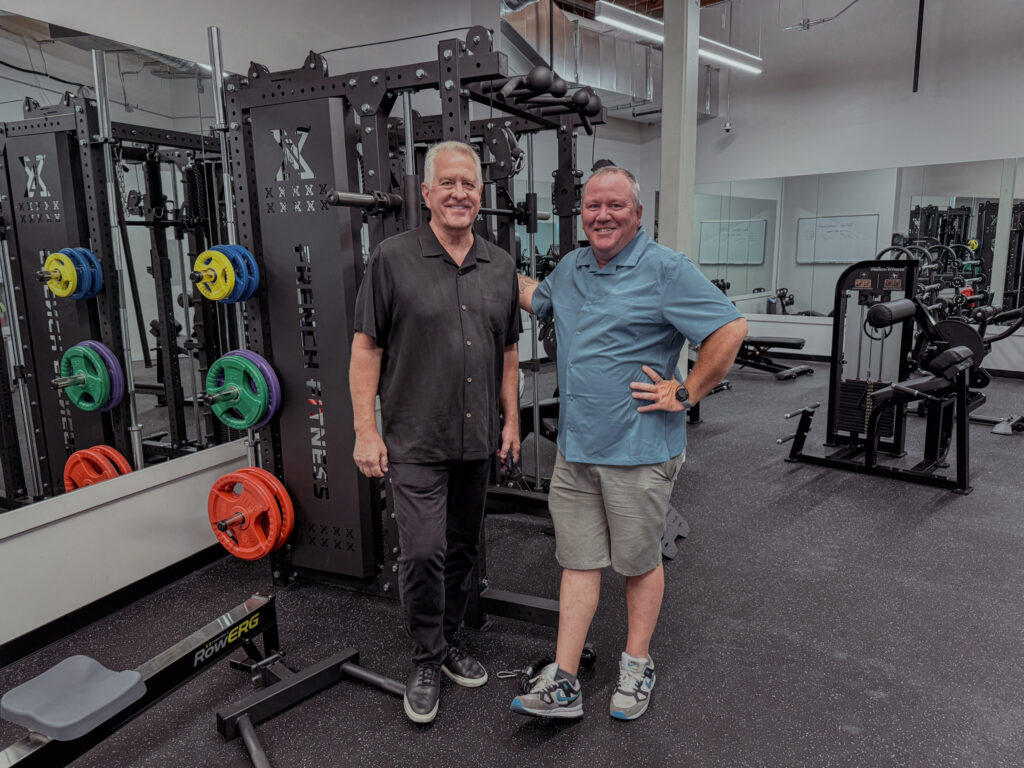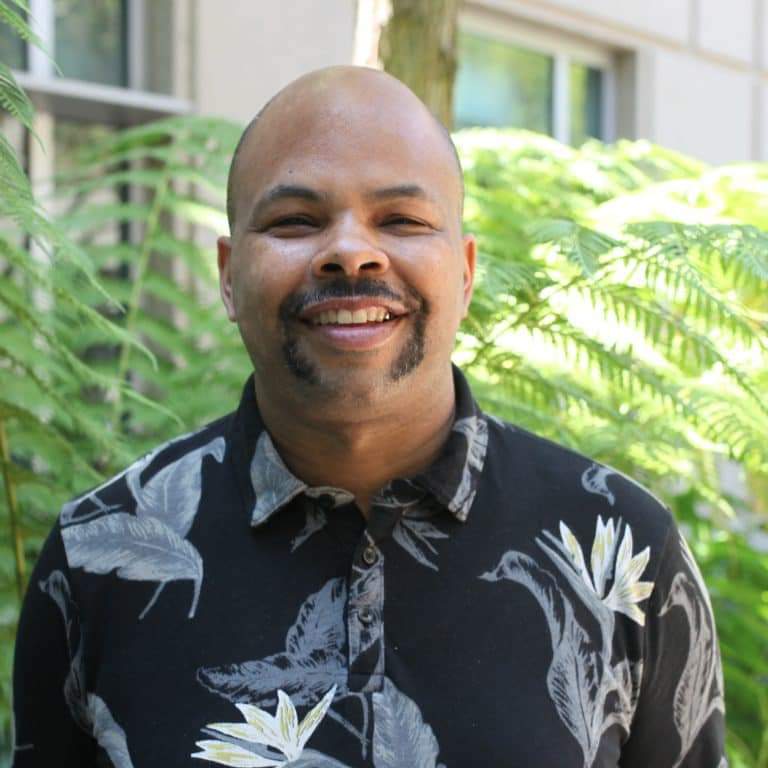In response to employee request and our continued efforts to improve the health and wellbeing of our staff, Credo’s San Jose office is pleased to announce its new gym, available for all employees to use.
Exercise has been proven to have both mental and physical benefits. Studies conducted by the National Institute of Health have found that exercise can reduce anxiety, depression, negative mood, as well as improving self-esteem and cognitive function. Consistent exercise can also be an important factor in injury prevention, allowing employees to futureproof their health. With the high demands of Silicon Valley, exercise is also a great way to improve mood and provide stress relief through the increased production of endorphins.
The newly opened gym contains machines acquired from French Fitness, a California-based business which refurbishes old gym equipment to give them a new life. A combined effort between Facilities Technician Paul Magill and Senior Program Manager Brian Sheredy, Magill says of the choice to use French Fitness was “part of our plan, to make sure we had as little of an environmental impact as possible.”

As a part of Credo’s commitment to upholding Sustainable Development Goals (SDGs) established by the United Nations, the choice to use French Fitness aligns with our goal to be a responsible consumer in both our office spaces and production lines. “The equipment is all broken down nut by nut, bolt by bolt, and refurbished. They’re as good as, or if not better, than new,” Magill says.
“I think the gym is a great addition for all of us at the company,” says Haoli Qian, Vice President of Engineering. “I know I use it very often, especially because it’s so convenient, and exercise is a great way to stay healthy both mentally and physically. The gym has also become a place for engineers to connect more, and some good ideas have come out of brainstorming sessions in the gym.”
The Credo Cares program, which aims to make a positive impact on the environment around us, also covers employee well-being. The gym is just the latest addition to the slew of other projects that Credo has been implementing over the years, including the basketball hoop in the parking lot that was put in around the same time the gym opened. “There were a few people who really wanted it,” Magill laughs.
Ultimately, the gym helps to improve morale among employees. “The gym gives people options about what they want to do on their break and places to socialize – like shoot some hoops, get on a treadmill, or whatever,” says Magill.
An intersection between Credo’s long-term goals to uphold ESG policies and the Credo Cares program, the gym hopes to support our employees in both mind and body, as well as fostering employee health and in turn, productivity. We welcome all employees to use the gym any time, which remains open until 9PM every day. “We both worked on it pretty hard on it,” laughs Magill.
As a part of our dedication to opening doors into the technology and semiconductor industry, this year’s program has become more formalized, with more support programs and opportunities offered to interns. Wing Cheung, director of human resources, explains his motivation behind the changes. “We want to make sure they’re successful – so that when they come on board, they’re not just working on one team. We want them to socially adapt to the organization, our culture, and what we’re doing.”
“It’s always great to see interns go through the program,” says Alex Nazari, Vice President of Engineering, System Applications. “They bring in so many new experiences and everything they’re learning at school enables them to be creative and come up with innovative ideas and solutions. It’s a collective breath of fresh air.”
Jayden Patel, a mechanical engineering intern from the University of Texas at Austin, has been working on redesigning module shells for Credo’s components and chips, hopefully eliminating the need to buy shells from third-party suppliers. “This is my first internship experience and the culture and communication at Credo has set my expectations for the future very high,” he says. “It’s been amazing seeing how different groups within Credo work together to execute success.”
While most interns come from engineering backgrounds, this year’s intern class also features more interns in what Cheung calls the “administrative”, or G&A side of the industry – specifically departments like marketing, human resources, finance, and IT. Just as much as the Credo’s success rests on the success of its products, G&A teams keep the company running smoothly. “A lot of the time the administrative teams are the forgotten teams...we’re just kind of working in the shadows. By putting more resources and getting more interns into that area ensures the company will succeed across the board.”
“I’ve been able to learn a lot about the company and its competitor and gain valuable insight into how Credo operates behind the scenes.” says Andrew Carrasquillo, a tax, financial planning & analysis intern from Claremont Mckenna College. “It’s been cool getting to see what the day-to-day is like in this industry and I’m learning more about how that fits into my own future.”
Interns will have also opportunities to work on short- and long-term projects, be mentored by industry experts, and connect with their peers working in other departments at Credo. Intern ambassadors, or employees who were previously interns themselves or are role models in the company, will also be paired up with groups of interns to provide all the support they need. “I call them champions -- intern champions,” explains Cheung. “They will be advocates if there are any questions or concerns, or work with departments to leverage resources to support the interns as well.”
Since the beginning of its internship program, 15 employees have remained on as employees in various capacities, allowing Credo to build a tight-knit community with dedicated and experienced employees. “We just had two more interns join us in July as full-time employees,” says Nazari. “This really reflects the program’s ability to make life-long positive impressions on our interns.”
Ultimately, Cheung describes the program as a two-way street – ensuring future success by investing in the minds of tomorrow. “The company has to give,” he says. “We’re educating, we’re mentoring, we’re teaching, but also, we want the interns to bring what they’ve got. Show us what you have.”
Thank you to all our current interns and stay tuned for updates on YearUp!
Since its invention during WWII by Dr. Charles Drew, blood-collecting vehicles have been paramount to increasing the supply of blood available to medical facilities. Phillip Martin, an account manager for Stanford Blood Center who works primarily to organize drives with organizations and companies in the Bay Area, explained how bloodmobiles increase donor numbers and willingness to donate. “People will tell you the convenience of the blood drive is big determination if they give or not,” he says. “A blood center can be around the corner of your house, but you just drive right past it. If it’s at work, and you’re being encouraged to do it, people are more likely to take an hour of their day to come give some blood.”
Created within the Stanford School of Medicine, the Blood Center was most specifically created to meet transfusion needs within the Health Care Center and the Children’s Hospital. Now, bloodmobiles can supply blood nationwide, helping backfill other hospitals that may be struggling. “When there’s a need, the call goes out. Whoever has the supply and the blood type available fulfills that need,” says Martin.

“Every 2 seconds someone in the US needs blood,” says Michael Bustamante, Senior Manager - CQE. “Especially with me being O positive, I know my blood can go towards helping a lot of people. It’s great how Credo makes it so easy for it to happen.”
The three bloodmobiles of the Blood Center service a two-hour radius around Palo Alto and can be set up almost anywhere. “The bloodmobile only needs a flat surface and a bathroom,” Martin laughs. “During the pandemic, I worked with a lot of hotels, and they’d just let us park the bus in the parking lot.”
However, with companies opening back up and a lot of work returning to in-person, Martin describes his experience working with companies in the area. “Many companies are opening up their doors and their parking lots – they're allowing us access to their employees and trusting us with them,” he says. “Without them opening up, our mission becomes almost impossible.”
The Blood Center aligns with Credo’s commitment to supporting the communities around us and being a global citizen. As part of our Credo Cares initiative, this blood drive and all upcoming events will support local organizations and causes offering our employees direct opportunities to give back to the community. Thank you to all our donors and the Stanford Blood Center for giving us this opportunity to make an impact!
In November, we released our first ESG report and have been making great strides to implement strong policies and best practices regarding sustainability. We are nowhere near our final step, but we are making efforts to be a better company that helps leave the world a better place. We will be in good hands if we can create more powerful thinkers who care about our products and our earth’s future with a long-term view.
Products
This past year, we have released innovative products that revolutionize the power and energy consumption landscape. One such product is Dove 850, a Linear Receive Optic (LRO) and the world's first 800G DSP that targets hyperscalers and AI data centers. This groundbreaking product alone cuts DSP power by 50%, a significant achievement in the industry. It allows the industry to keep power costs low while providing higher throughput. Hyperscale and AI data centers are now focusing on energy efficiency more than ever before, and our products are at the forefront of this movement. Our business is flexible as we are a fabless hardware company, but we create products that use half the power of our competitors and offer cost benefits. Semiconductors, as a whole, are a large area of opportunity that we believe is going to be an important factor in driving lower power and improved energy efficiency in the data center market.
E-Waste and Sustainability
We've made significant efforts to be a more sustainable company this past year, going as far as simplifying the way our products are packed and making sure our corporate signage is made from recyclable material. Our AEC team has cut the amount of materials that go into the packaging for our AEC cables by nearly 50%. We plan to connect with our larger customers to work on a more efficient way to help recycle our products once a new one is introduced. Our office management teams have implemented energy-efficient practices, putting effort into reducing our carbon footprint. Additionally, we’ve introduced recycling programs and encouraged the use of reusable materials to minimize waste as we aim to remove all single-use plastics from our offices.
Community Engagement, STEAM, and Sustainability
Credo has consistently been trying to be involved in our community since we announced our Credo Cares program. We work with RAFT (Resource Area for Teachers) to support STEAM education projects for schools in underserved areas. RAFT reuses and recycles all matter of business goods, from file folders to circuit boards, to create STEAM projects. These initiatives are not just about giving back, but about making a real difference in the lives of those around us while the world we live. We are continuously looking for new ways to support our local community while protecting the planet.